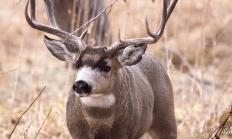Search myodfw.com
Showing 41 - 60 of 287 results
Article
Known for its high desert climate, sage-covered canyons, glacial peaks and mountain lakes, this zone is defined by the reach of Oregon’s finest trout stream. The Deschutes River is no bigger than a creek when it passes close by South Twin Lake on its way toward Wickiup and Crane Prairie reservoirs. But it soon gains power enough to grow athletic rainbow trout. The considerably tamer Crooked River offers good practice if you’re just learning how to keep your footing in a slippery freestone stream.

Article
Wide open spaces, wild windy places, and extreme temperatures characterize Oregon’s largest, most remote fishing zone. Scarcity makes water especially precious here, providing welcome oases in an often rugged, but spectacular landscape. Rainbow trout are native to its streams, including the Williamson, Malheur and Chewaucan rivers. And stocked rainbow and brown trout grow to trophy size in many of its lakes and reservoirs.
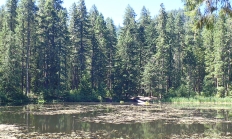
Article
The granite peaks of Oregon’s Blue and Wallowa Mountains form the backdrop for many of this zone’s glacier-carved lakes and crystalline streams. Pack trains are a common sight on steep backcountry trails. Bull trout thrive in this zone’s cold, clear rivers, which also sustain rainbow trout and welcome returning runs of hatchery-reared steelhead. Warmwater fisheries are few, but the John Day River offers world-class fishing for smallmouth bass.

Article
Mentored Youth Hunter Program allows youth 9 through 15 years of age to hunt without first passing an approved hunter safety education program. It gives unlicensed youngsters an unlimited opportunity to receive mentored, one-on-one field experience and training on the ethics, safety, responsibility and enjoyment of hunting while closely supervised by a licensed adult who is 21 years of age or older and who has a valid license and tag(s) for the dates, area and species being hunted. Register for the Mentored Youth Hunter Program free of charge online (or after clicking the online link – go to Purchase from
August 28, 2025
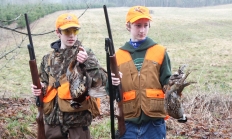
Article
Dove hunting seasons open earlier than many others and offer one of the first opportunities to go afield each year. The action can be fast, offering lots of opportunities to shoot and the chance to sharpen your skills for the opening of other bird seasons later in the fall.

Article
Rabbit hunting is the third most popular type of hunting activity in the U.S., behind wild turkey and deer hunting. Few people take advantage of it in Oregon, but they should—rabbits and hares are abundant and there is no closed season or bag limit. Plus, they taste good!

Article
Oregon offers some of the best upland game bird hunting in the West. The state’s diverse habitats support nine species of upland game birds— pheasants, chukar, Hungarian partridge, valley (California) quail, mountain quail, ruffed grouse, blue grouse, sage-grouse and wild turkey. There are upland hunting opportunities in every corner of the state, and one upland bird season or another is open continuously from September 1 through January 31. Throw in a six-week spring turkey season and you can hunt upland game birds in Oregon for more than half of the year! Also, since many of the species share similar habitat
August 18, 2025

Article
Let's go fishing! Not enough time? Think again. If you live in the greater Portland area, there are a number of places you can get to in less than an hour. Directions and times are approximate, mileage and generalized directions are from Pioneer Courthouse Square.

Article
Let’s go fishing! not enough time? Think again. If you live in the Medford area, there are a number of places you can get to in less than an hour. Directions, mileage, and times are approximate.

Article
Let’s go fishing! not enough time? Think again. If you live in the Roseburg area, there are a number of places you can get to in less than an hour. Directions, mileage, and times are approximate and start from the Douglas County Courthouse in Roseburg (1036 SE Douglas).
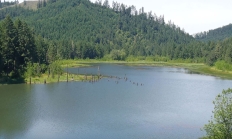
Article
Not enough time to go fishing? Think again—if you live in the Bend, Redmond, Prineville, Sisters or LaPine areas there are a number of great fishing spots just a short drive away. Make sure you read the Oregon Sport Fishing Regulations, and why not grab a friend or family member to go with you? The times and distances listed are from Drake Park in Bend.

Article
Lane County offers so much to explore — from coastal lakes and rivers to mountain lakes and streams. The Willamette River runs through the Eugene-Springfield metro area and is fed by three major rivers: the McKenzie, Middle Fork Willamette and Coast Fork Willamette. Florence is surrounded by large dune lakes, the Siuslaw River and Pacific Ocean. With so many places to fish, it’s no wonder Lane County is an angler’s paradise. For current regulations, call your local ODFW office or check MyODFW.com.
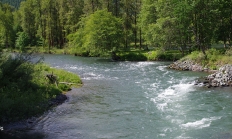
Article
If you’re just getting started fishing, or you want to try a new kind of fishing, you’ll need a rod, reel and some tackle. To help you get started, we’ve put together some fishing outfits for trout, panfish (bluegill, crappie, pumpkin seed, sunfish), bass, steelhead, walleye, salmon and sturgeon.

Article
More fish are probably lost because of improperly tied knots than any other single reason. Yet anglers who spend hours practicing their casting or making lures often neglect this simple fundamental. But if tying better knots might help us land more fish, it makes sense to give knot tying a little more attention.

Article
A beginner's guide to waterfowl hunting on Sauvie Island- Hunting in the Westside Unit. Part 3 of a 5 part series.

Article
A beginner's guide to waterfowl hunting on Sauvie Island - hunting in the North Unit. Part 4 of a 5 part series.
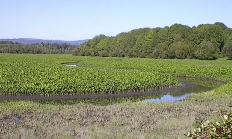
Article
A beginner's guide to waterfowl hunting on Sauvie Island - hunting for geese. Part 5 of a 5 part series.

Article
Get your permit to hunt goose in the northwest corner of Oregon- part of the Pacific Flyway for migrating waterfowl.
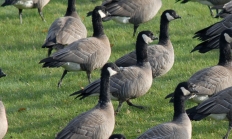

Article
ODFW’s Premium Hunts give any hunter a chance to draw an additional deer, elk or pronghorn tag with a months-long season.
